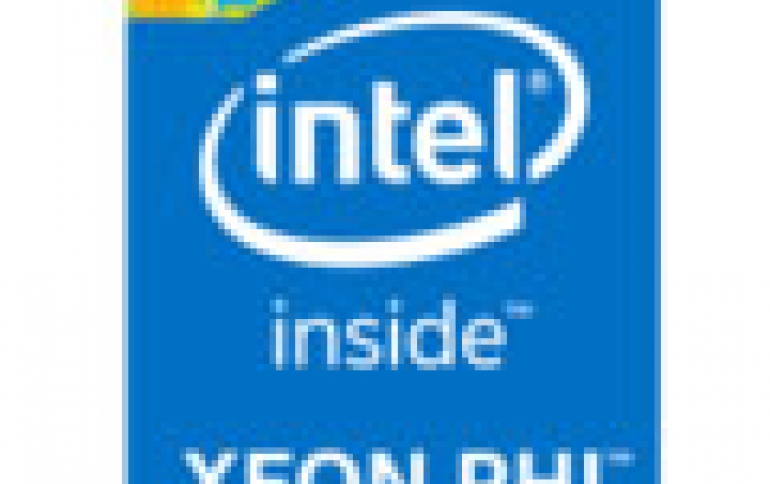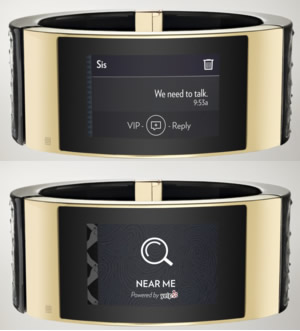
Intel Light Beams to Speed Up Supercomputers, Details New Intel Xeon Phi, MICA Smart Bracelet
Intel today announced new technologies related to high-performance computing (HPC), include the future generation Intel Xeon Phi processor, code-named Knights Hill, and new architectural and performance details for Intel Omni-Path Architecture, a new high-speed interconnect technology optimized for HPC deployments. Seperately, Intel revealed few details about the MICA smart bracelet the company had announced last September.
But let's start with Intel's server plans. The company on Monday said that its, third-generation Intel Xeon Phi product family, code-named Knights Hill, will be built using Intel's 10nm process technology and integrate Intel Omni-Path Fabric technology.
Knights Hill will follow the upcoming Knights Landing product, with first commercial systems based on Knights Landing expected to begin shipping next year.
Intel expects more than 50 providers to offer systems built using the new processor version of Knights Landing, with many more systems using the coprocessor PCIe card version of the product. Knights Landing will power the Trinity supercomputer, a joint effort between Los Alamos and Sandia National Laboratories, and the Cori supercomputer, announced by The U.S. Department of Energy's (DOE) National Energy Research Scientific Computing (NERSC) Center. Additionally, DownUnder GeoSolutions a geosciences company, recently announced the largest commercial deployment of current-generation Intel Xeon Phi coprocessors, and the National Supercomputing Center IT4Innovations announced a new supercomputer that will become the largest Intel Xeon Phi coprocessor-based cluster in Europe.
Intel also disclosed that the Intel Omni-Path Architecture is expected to offer 100 Gbps line speed and up to 56 percent lower switch fabric latency in medium-to-large clusters than InfiniBand alternatives. The Intel Omni-Path Architecture will use a 48 port switch chip to deliver greater port density and system scaling compared to the current 36 port InfiniBand alternatives.
Providing up to 33 percent more nodes per switch chip is expected to reduce the number of switches required and reducing infrastructure costs at every scale. Intel claims that system scaling benefits include up to 1.3x greater port density than InfiniBand; use of up to 50 percent fewer switches than a comparable InfiniBand-based cluster of medium- to large-size and; up to 2.3x higher scaling in a two-tier fabric configuration using the same number of switches as an InfiniBand-based cluster.
Intel will integrate the Intel Omni-Path Host Fabric Interface onto future generations of Intel Xeon processors and Intel Xeon Phi processors.
The company has launched the Intel Fabric Builders Program to create an ecosystem working together to enable solutions based on the Intel Omni-Path Architecture. An expansion of the Intel Parallel Computing Centers was also announced, bringing the total to more than 40 centers in 13 countries working to modernize more than 70 of HPC's most popular community codes.
Intel has also expanded its Lustre software capabilities with the release of Intel Enterprise Edition for Lustre software v2.2 and Intel Foundation Edition for Lustre software. New appliances using the enhanced Intel Solutions for Lustre software are currently being offered from Dell, DataDirect Networks and Dot Hill.
 Seperately, Intel revealed few details about the MICA smart bracelet the company had announced last September.
Seperately, Intel revealed few details about the MICA smart bracelet the company had announced last September.
MICA or "My Intelligent Communication Accessory," has been designed by Opening Ceremony and has been engineered by Intel. The smart and fashionable luxury accessory is an intelligent bracelet designed for women.
MICA's design is constructed of premium finishes and 18K gold coating with a curved sapphire glass touch screen display. One style features black water snake skin, pearls and lapis stones, while the other style features white water snake skin, tiger's eye and obsidian.
Via a touch-screen sapphire display, wearers can view content. Vibration-based alerts, a curated VIP contact list and customizable quick replies deliver notifications directly to the wrist.
MICA provides access to text messages and notifications of incoming mails from "important contacts" as designated in Gmail. Users can dismiss notifications from the device and respond with customizable quick replies.
It displays Google Calendar and Facebook event notifications while enabling users to accept or reject appointments.
The device also offers intelligent reminders, "Time to Go" (TTG), powered by TomTom and Intel, that dynamically adjust based on location to account for the time required to get to the next appointment. MICA also provides users with access to Yelp local search, which includes business ratings and reviews. MICA wearers can use Yelp to locate restaurants, shops and other local businesses nearby.
Users can curate a VIP contact list that filters notifications and text messages. Vibration-based alerts discreetly alert the wearer to incoming alerts.
The bracelet also provides remote access and locking, the ability to locate the device, and configuration capabilities via a Web-based portal.
MICA is connected by AT&T and includes a two-year wireless service plan provided by Intel in the price of the bracelet. The accessory will be available by early December in the United States for $495 and will retail exclusively at Opening Ceremony New York and Los Angeles, select Barneys New York locations, and online at Openingceremony.us and Barneys.com.





















